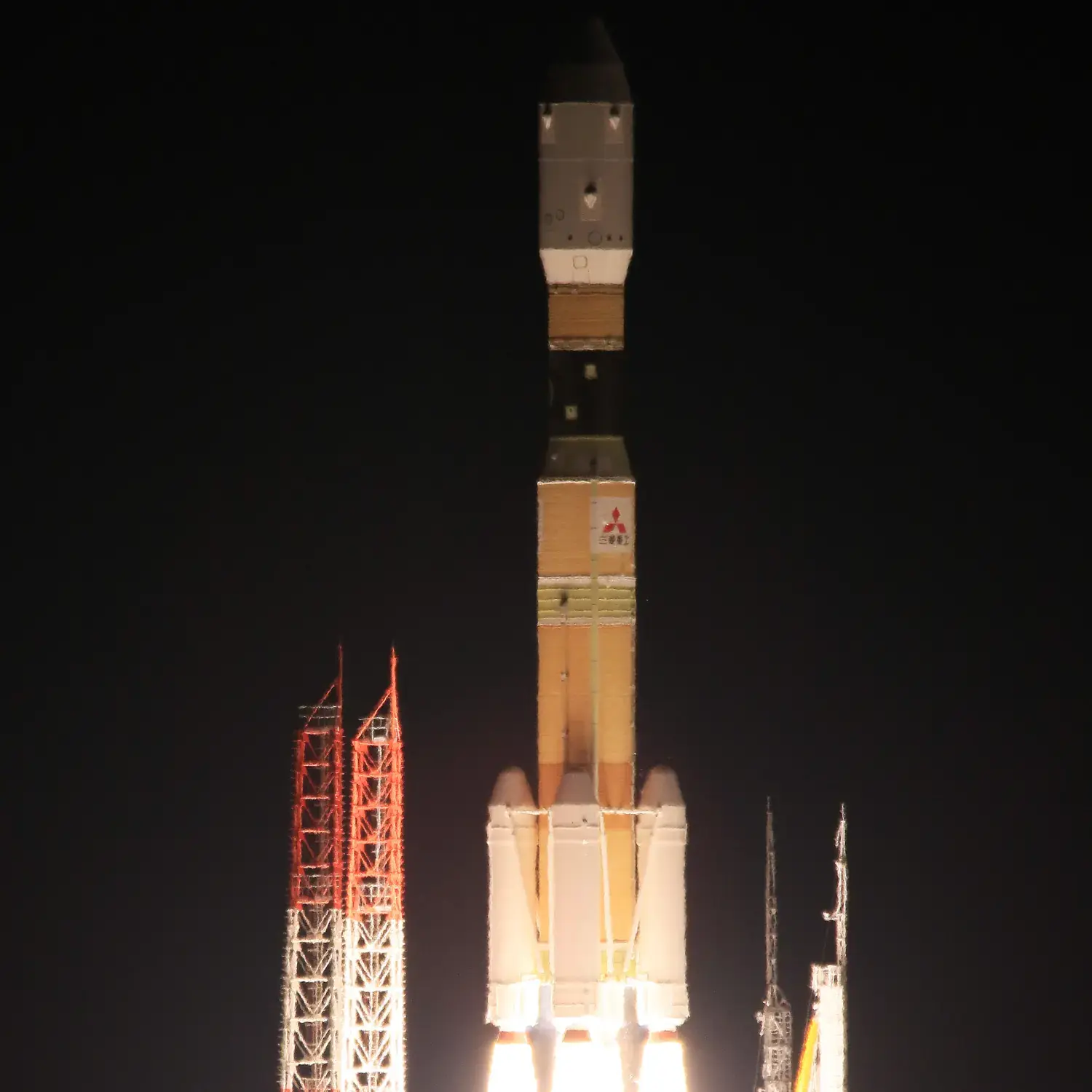/
HTV-9
Launch Success
Liftoff Time (GMT)
17:31:00
Wednesday May 20, 2020
Watch Replay
Official Livestream
Mission Details
Launch Notes
Last flight of the H-IIB rocket.
HTV-9
The H-II Transfer Vehicle (HTV), also called Kounotori (こうのとり, Kōnotori, "Oriental stork" or "white stork"), is an expendable, automated cargo spacecraft used to resupply the Kibō Japanese Experiment Module (JEM) and the International Space Station (ISS). The Japan Aerospace Exploration Agency (JAXA) has been working on the design since the early 1990s. The HTV is very important for resupplying the ISS because after the retirement of the Space Shuttle it is the only vehicle that can transfer new 41.3 in (105 cm) wide International Standard Payload Racks (ISPRs) and dispose old ISPRs that can fit the 130 cm wide tunnels between modules in the US Orbital Segment. The HTV is about 9.8 metres long (including maneuvering thrusters at one end) and 4.4 metres in diameter. Total mass when empty is 10,500 kilograms, with a maximum total payload of 6,000 kilograms, for a maximum launch weight of 16,500 kilograms. The HTV is comparable in function to the Russian Progress, ESA ATV, commercial Cargo Dragon 1, and Cargo Dragon 2 of SpaceX. Plus the Cygnus spacecraft, all of which bring supplies to the ISS. Like the ATV, the HTV carries more than twice the payload of the Progress, but is launched less than half as often. Unlike Progress spacecraft, Cargo Dragon 2's and ATV's which use the docking ports automatically, HTVs and American Dragon 1 approach the ISS in stages, and once they reach their closest parking orbit to the ISS, crew grapple them using the robotic arm Canadarm2 and berth them to an open berthing port on the Harmony module. Initially seven missions were planned in 2008–2015. With the extension of the ISS project through 2028, three more missions were added, with the tenth flight seeing an improved, cost-reduced version called the HTV-X.
Low Earth Orbit
1 Payload
16,500 kilograms
Launch Site
Stats
H-IIB
9th
Mission
1st
Mission of 2020
2020
33rd
Orbital launch attempt

